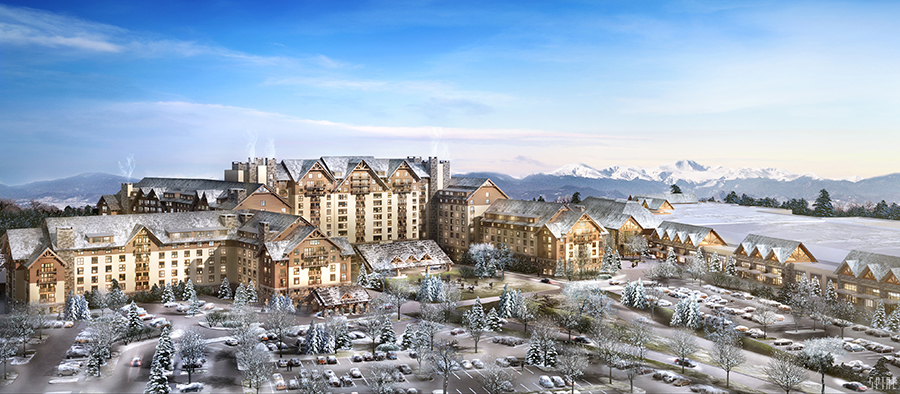Steady in-migration and employment growth will keep most sectors of the construction industry in the Mountain states healthy in 2017.
Colorado and Utah should see close to a 6% increase in construction starts this year, led by continued improvement in the residential and non-residential sectors, according to Dodge Data & Analytics.
Idaho won’t be far behind, but the more energy-dependent states of Montana, Wyoming and the Dakotas may struggle as the mining and oil-and-gas sectors continue to decline.
Utah led the country in population growth in 2016, at 2.03%, while Colorado ranked seventh, at 1.68% growth, according to a December report from the U.S. Census Bureau. However, Wyoming saw its first population loss since 1999, with a 0.2% drop.
But some economists say that state’s decline has reached bottom. Jim Robinson, a senior economist for the state of Wyoming, says that drilling activity has increased in recent months and oil-and-gas job losses may have flattened out. Wyoming residents are hopeful that a shift in energy policy under the Trump administration will provide a boost for mining and drilling activity.
It’s much the same story in Montana, where depleted state revenues have hurt public-sector construction. "Montana’s tax base and a lot of construction activity has relied heavily on resource industries like coal, oil, ag and timber," says Cary Hegreberg, executive director of Montana AGC. "For different reasons, they are all in the tank. With no state sales tax, we can’t tax tourists nearly enough to make up for the shortfall. We will be asking our Legislature to consider all options when the session convenes this January."
The more diverse economy of Idaho has helped the state to avoid a public-sector decline. "Construction is booming all across Idaho, especially in the Treasure Valley, which has led the nation in construction job growth for more than a year," says Wayne Hammon, CEO of Idaho AGC. "A steady stream of commercial and school projects, along with a healthy increase in transportation work resulting from an increase in the state’s fuel tax, have kept Idaho contractors busy. Home construction has lagged but is now showing signs of recovery as well."
More Work, More Boots on the Ground
The Colorado construction industry just finished one of busiest building years in recent history, with more than $16.6 billion in total new construction starts, as of the end of November, according to Dodge. That’s an 11% increase from the previous year, with the non-residential sector up by 21%, year over year, and residential building up 14%.
Large projects, such as the $800-million Gaylord Rockies Resort and Conference Center, the on-campus football stadium at Colorado State University in Fort Collins and several high-rises in downtown Denver, are driving the building boom, aided by ongoing work on several new rail lines.
Big projects in the planning and design stages include a major terminal renovation at Denver International Airport, upgrades for the 230-acre National Western Stock Show Complex, and the $1-billion-plus Central 70 freeway expansion through north Denver.
Colorado voters also approved in the November election a record $2.6 billion for public schools, including $572 million for Denver Public Schools and $350 million in the Adams 12 district, most of it slated for capital construction and building upgrades, according to the Colorado School Finance Project.
Other healthy market sectors in the state include hospitality, offices, higher education, multifamily and mixed-use projects.
In Utah, work continues on the $1.8-billion, 1.7-million-sq-ft replacement of the Salt Lake City International Airport Terminal, scheduled to open in 2018. The state also will build a new $1-billion-plus prison, with construction slated to begin this year.
Strong market segments include corporate offices, health care and higher education, says Brett Okland, vice president of Okland Construction Co., Salt Lake City. There also will be some growth in multifamily, mixed-use and institutional work, he notes. "Corporations, in particular, have been looking to upgrade their work environments and amenities to retain employees," he says. "One pleasant surprise has been the big companies and big projects we’ve seen coming to Utah. There’s a lot of excitement regarding our development as a state."
But with the big projects in both Utah and Colorado comes the ever-present strain of finding enough workers to build them.
"We’ve seen great opportunities for our industry to pursue work," says Rich Thorn, AGC of Utah president and CEO. "The private market, coupled with some large public projects, [such as] the Salt Lake City airport, the new Utah state prison and some big heavy-highway work, challenge our industry with how to address workforce shortages. It seems our biggest issues still revolve around workforce, particularly skilled workforce."
“Construction employment in Colorado grew by 10,700 employees, about an 8.9% growth rate [in 2016],” says Michael Gifford, president of AGC Colorado. Most of that growth is in the greater Denver area, he notes.



